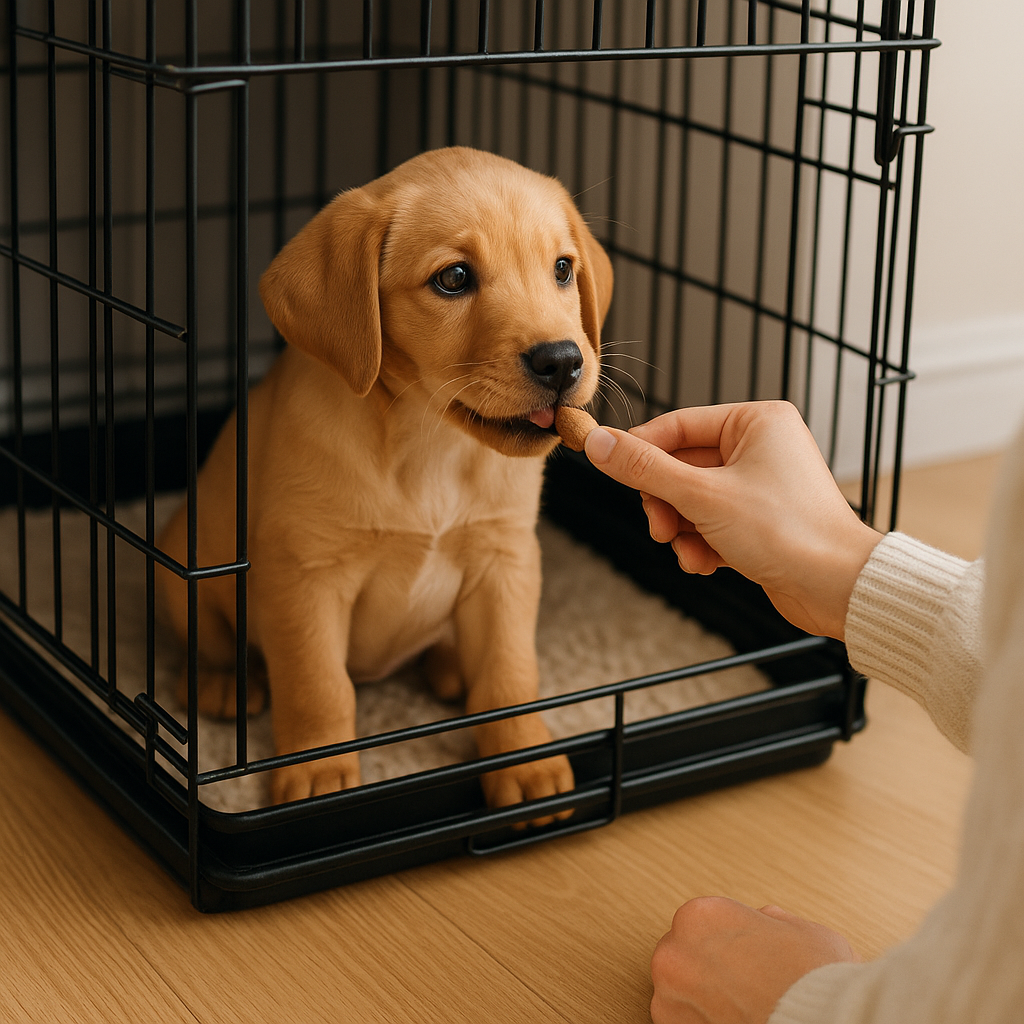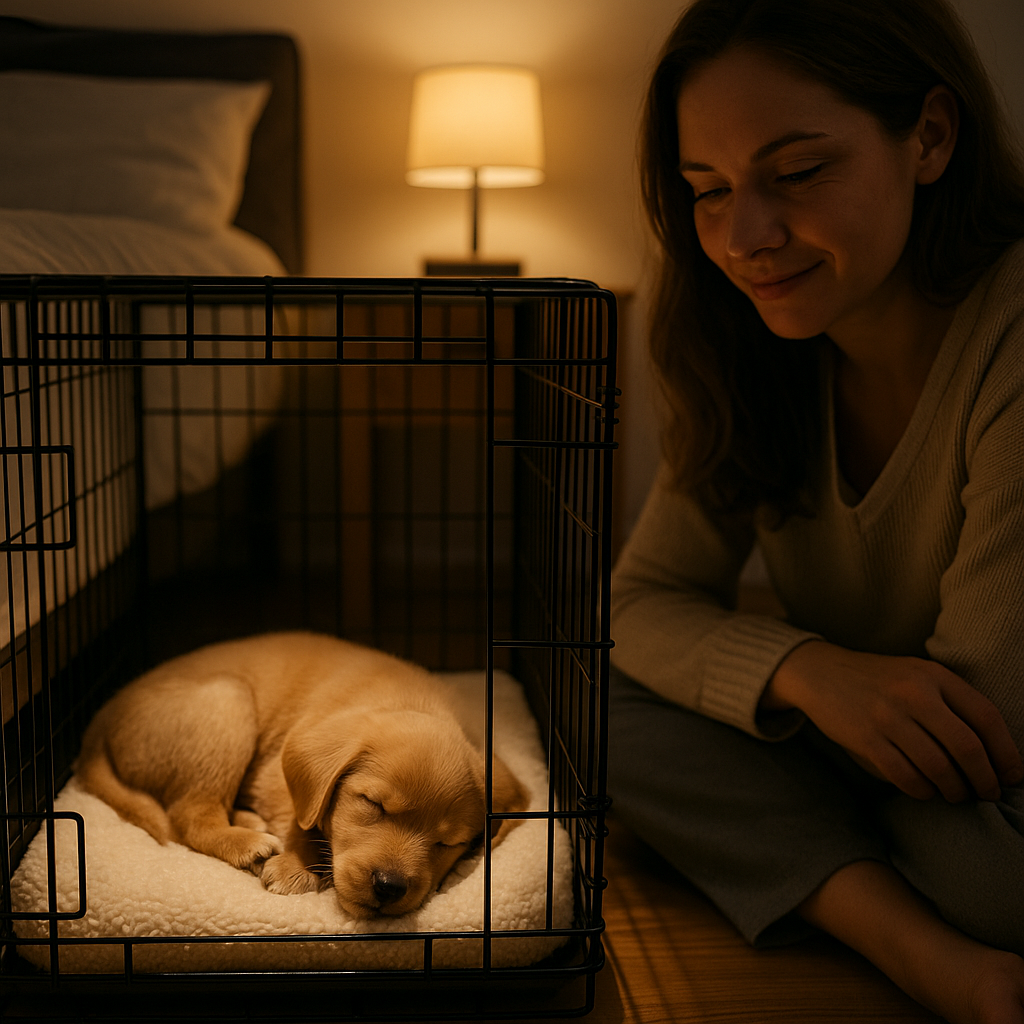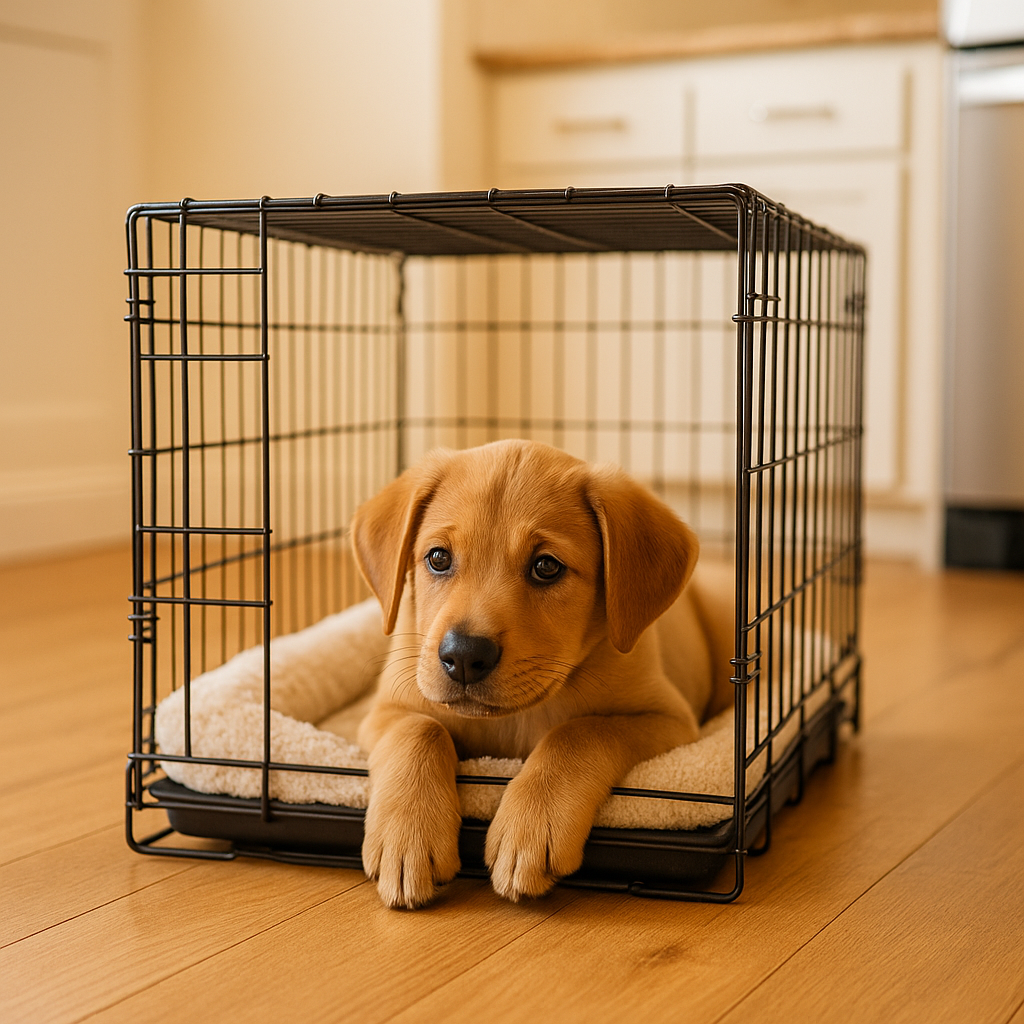Crate Training Puppies: Benefits, Methods & Mistakes to Avoid
When you bring a new puppy into your home, one of the most important questions you’ll face is: how do I help this little ball of energy adapt to family life smoothly? Crate training is a tried-and-true method that helps with housebreaking, safety, and creating a consistent routine. Unfortunately, many owners hesitate, fearing that a crate is a form of punishment. In reality, when introduced the right way, a crate becomes your puppy’s sanctuary — a den-like environment where they can rest, feel safe, and grow into well-behaved companions. In this complete guide, we’ll explore the benefits of crate training, step-by-step training methods, the biggest mistakes to avoid, and practical answers to frequently asked questions. By the end, you’ll be confident about crate training and ready to give your puppy the best possible start.

Why Crate Training is Beneficial
Crate training offers numerous benefits that go far beyond simply house training. Here’s why experts and veterinarians recommend it:
1. A Safe Haven
Puppies are naturally curious and can get into trouble by chewing wires, swallowing objects, or wandering into unsafe areas. A crate acts as a safe zone, protecting them from accidents when you cannot supervise. It also gives them a retreat when they feel overwhelmed by noise or activity.
2. House Training Aid
Dogs instinctively avoid soiling their sleeping area. This natural behavior makes a crate an effective tool for house training. By scheduling potty breaks and using the crate strategically, puppies quickly learn bladder control.
3. Travel Convenience
Whether you’re taking your puppy to the vet or on a family trip, crates reduce anxiety during travel. Dogs accustomed to crates view them as familiar, reducing stress in cars or airplanes.
4. Personal Comfort Zone
Just like humans appreciate their own bedroom, puppies appreciate having a den. A crate provides that sense of ownership, encouraging independence and emotional stability.

Step-by-Step Crate Training Methods
Proper crate training requires patience, consistency, and positive reinforcement. Below are proven steps to ensure your puppy learns quickly and happily:
Step 1: Introduce the Crate Positively
Place the crate in a central area, such as the living room. Keep the door open and allow your puppy to explore at their own pace. Put a cozy blanket and a favorite toy inside. Every time the puppy enters, reward with praise or a treat. This establishes the crate as a positive space, not a prison.
Step 2: Short Sessions at First
Close the crate door for just a few minutes while you stay nearby. If your puppy stays calm, reward them immediately. Gradually increase the time as comfort builds. Never rush the process — confidence develops in small steps.
Step 3: Nap and Bedtime Use
Encourage naps inside the crate during the day. At night, place the crate near your bed so the puppy feels secure. Over time, the crate becomes their natural sleeping spot, which also reduces nighttime accidents.
Step 4: Feeding Inside the Crate
Place food bowls just inside the crate during mealtimes. This creates positive associations and helps reduce any reluctance. Many owners report faster adaptation when feeding is linked with the crate.
Step 5: Gradual Independence
Eventually, practice leaving the room while your puppy is in the crate. Start with short intervals (2–5 minutes), then build to longer periods. This prevents separation anxiety and builds independence.
Common Mistakes to Avoid
Even with the best intentions, many owners make errors that hinder progress. Avoid these pitfalls to ensure success:
- Using the Crate as Punishment: A crate must always remain a positive, safe environment. Never lock your puppy inside after misbehavior.
- Too Much Confinement: Puppies should not be left in the crate for long stretches. A good rule: puppies can stay in the crate for their age in months + 1 hour.
- Inconsistent Training: Skipping routines or failing to reward calm behavior can confuse your puppy.
- Ignoring Whining: While it’s important not to reward attention-seeking, you must also ensure the whining isn’t due to genuine needs (like potty breaks).
Practical Tips for Crate Training Success
- Keep the crate comfortable: Add blankets, chew toys, and make it cozy.
- Location matters: Keep the crate in a place where the puppy doesn’t feel isolated.
- Always reward calm entry: Treats and praise reinforce good behavior.
- Be patient: Every puppy adapts at their own pace. Don’t compare progress with others.

Frequently Asked Questions (FAQ)
How long can I leave my puppy in the crate?
Follow the rule of thumb: puppy age in months + 1 hour. A 3-month-old puppy should not be left for more than 4 hours. Always provide breaks for exercise and potty.
Is crate training cruel?
No. When used correctly, crate training is humane and beneficial. It provides structure, security, and comfort for your puppy.
What size crate should I buy?
The crate should be large enough for the puppy to stand, turn, and lie down comfortably — but not oversized, as this can encourage accidents.
When should I stop using the crate?
Once your puppy is fully house-trained and trustworthy when left alone, you may reduce crate use. However, many dogs continue to appreciate the crate as their personal safe space for life.
Conclusion
Crate training is not about restriction — it’s about freedom, structure, and emotional security. By embracing the benefits, following proven step-by-step methods, and avoiding common mistakes, you’ll raise a puppy that feels safe, confident, and well-behaved. Remember, patience and consistency are your best tools. With the right approach, your puppy will not only accept the crate but love it as their forever sanctuary.

